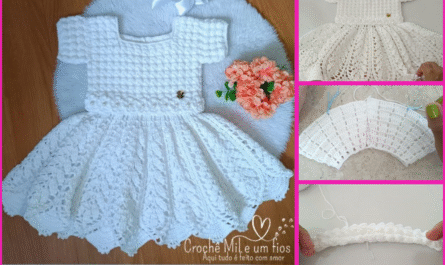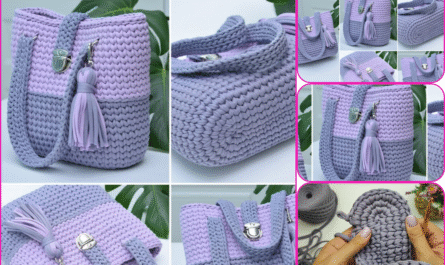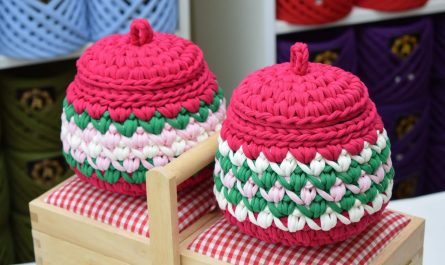Sure! Making a crochet fish scale pattern handbag (also known as a crocodile stitch handbag) is a fun and stylish project. Below is a detailed guide covering everything from materials, stitch explanations, and step-by-step instructions to finishing the handbag.
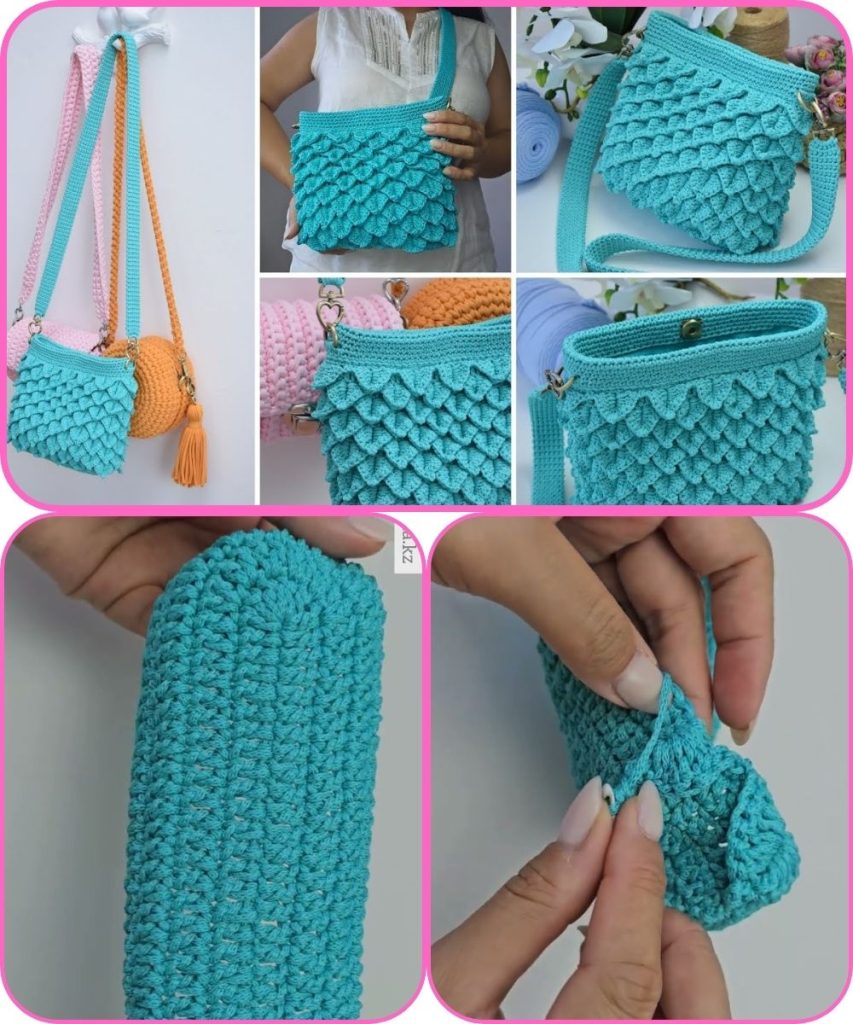
🧶 How to Make a Crochet Fish Scale Pattern Handbag
👜 Overview:
This handbag features the crocodile stitch, which creates a beautiful, textured, scale-like effect that resembles fish or dragon scales. It’s ideal for a statement accessory.
✂️ Materials Needed:
| Item | Description |
|---|---|
| Yarn | Worsted weight yarn or cotton yarn (about 200-300g depending on size) |
| Crochet Hook | 4.0mm (G) or size suitable for your yarn |
| Lining Fabric | Optional, for interior lining |
| Sewing Needle | For attaching lining and sewing pieces together |
| Scissors | For cutting yarn |
| Stitch Markers | Optional but helpful |
| Purse Handles | Optional (wooden, metal or crochet handles) |
| Magnetic Clasp or Zipper | For closure (optional) |
🧵 Stitches & Techniques Used:
- Chain (ch)
- Double Crochet (dc)
- Slip Stitch (sl st)
- Crocodile Stitch (fish scale stitch) – main focus
- Single Crochet (sc) – for edges and joining
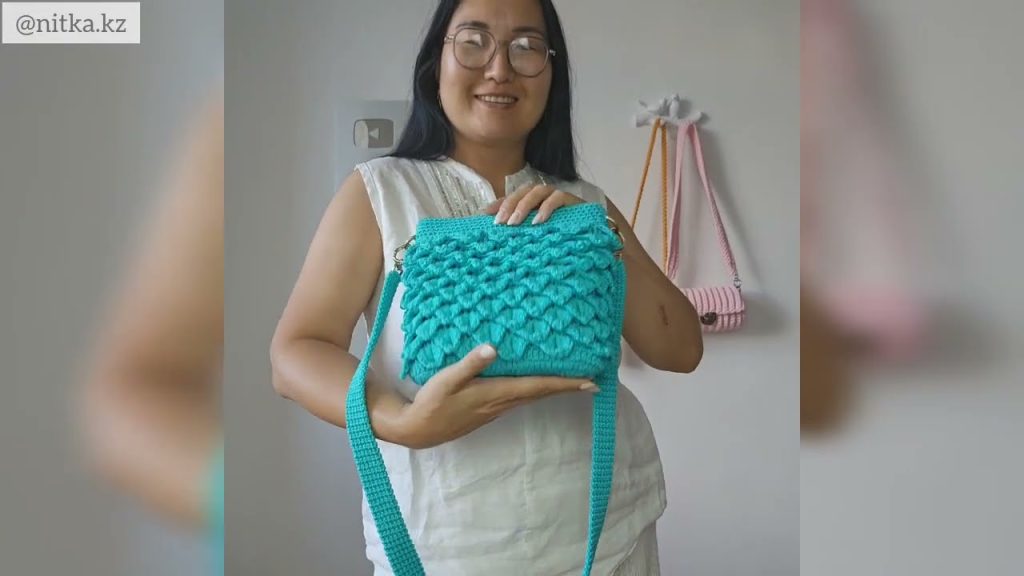
🐊 Understanding the Crocodile Stitch
The crocodile stitch is worked over two rows:
- Row 1: Base row of V-stitches (dc, ch 1, dc in same stitch).
- Row 2: The scales are formed over the V-stitches from the previous row. Each scale is made by working 5 dc down one dc post, and 5 dc up the next dc post (of the V-stitch), creating a scale.
📏 Approximate Size:
- Width: 10–12 inches (25–30 cm)
- Height: 8–10 inches (20–25 cm)
You can adjust the width by starting with more or fewer multiples of the stitch pattern.
🪡 Instructions:
1. Base/Foundation Row
- Start with a foundation chain that is a multiple of 6 + 2. (E.g., 38 chains)
- Row 1: Starting in 4th chain from hook, work (dc, ch 1, dc) (V-stitch) in every 6th chain. Continue to end. Turn.
2. Crocodile Stitch Pattern
The crocodile stitch alternates direction every row. Here’s a basic 2-row repeat:
Row 2 (First Scale Row):
- Turn work.
- 5 dc down the first dc post of V-stitch, ch 1, 5 dc up the second dc post.
- Skip the next V-stitch and repeat.
- You’ll make scales on alternate V-stitches.
- End with 1 dc to keep edge straight.
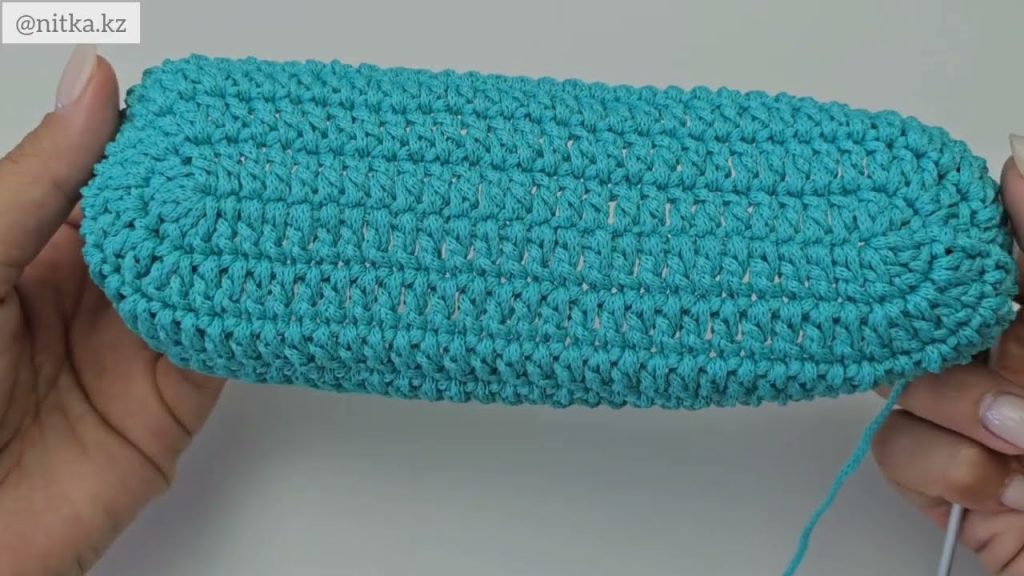
Row 3 (V-Stitch Row):
- Ch 3 (counts as dc), work V-stitches into center space of each scale (the ch 1 space).
- At the end of the row, make one dc.
Row 4:
- Work crocodile stitches over the V-stitches, offset from the previous row.
- Repeat pattern until desired height.
🔁 Repeat Rows 3 and 4 until the bag is the height you want (usually 10–12 rows of scales).
🧩 Assembly:
1. Shaping the Bag
- Fold the rectangle in half (scales facing out) to form the front and back.
- Use single crochet or whip stitch to sew the sides shut.
2. Top Edging
- Work a round of single crochet or half double crochet around the top opening to neaten it.
- You can also create a flap using dc rows if desired.
3. Lining (Optional)
- Cut fabric slightly larger than the bag.
- Fold and sew the fabric to create an inner pocket.
- Hand-stitch or machine-sew the lining to the inside of the bag.
4. Add Handles or Strap
- Attach store-bought handles or crochet your own using chains and rows of sc or hdc.
- Sew securely to the top sides.
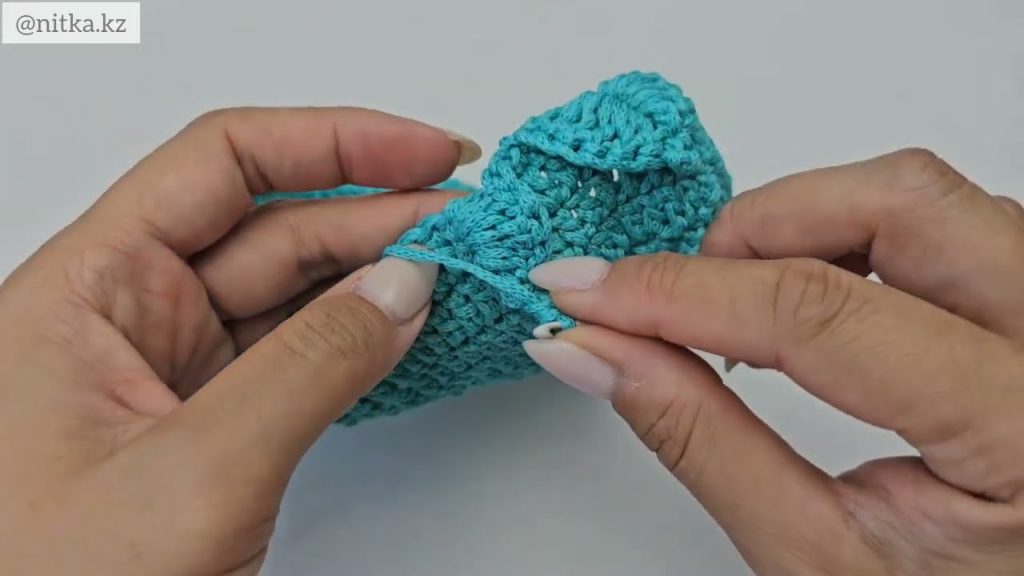
5. Closure (Optional)
- Add a magnetic snap, button, or zipper at the top.
🪄 Tips:
- Blocking helps shape the bag and open up the scale pattern.
- Use a firm yarn like cotton for more structure.
- For a more slouchy style, use soft acrylic or wool blends.
- Consider using variegated yarn for colorful scales.
📷 Optional Visuals (If You Want to Search):
- Search for: “crochet crocodile stitch handbag tutorial” or “fish scale crochet bag pattern” on YouTube or Pinterest.
- Look for diagrams of crocodile stitch for better clarity.
🧺 Care Instructions:
- Hand wash gently in cold water.
- Lay flat to dry.
- Avoid stretching the scales too much when wet.
Watch video:

